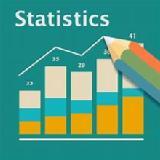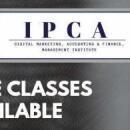SEMESTER-I
Course: STATISTICS FOR MANAGEMENT
Course Objectives: 1. To introduce descriptive statistics to gain knowledge of business 2. Understand sampling theory for small and large samples 3. Study concepts related to Correlation and Regression 4. Analyze advanced statistical concepts and their utility 5. To discuss various data collection methods in statistics 6. Examine statistical methods to formulate and test hypotheses
Unit – I: Introduction to Statistics i.) Introduction to Statistics – Overview, origin and development and Managerial Applications of statistics, Measures of Central Tendency, Dispersion, Skewness and Kurtosis. ii.) Introduction to probability – Concepts and Definitions of Probability – Classical, Relative, frequency, subjective and axiomatic. Addition and Multiplication theorems, Statistical independence, Marginal, Conditional and Joint Probabilities. iii.) Bayes’ theorem and its applications.
Unit – II: Probability Distribution i.) Probability Distribution-Random Variable (RV), Expectation and Variance of a RV. Probability distribution, function, properties, Continuous and Discrete Probability distribution functions. ii.) Discrete Probability distributions: Binomial Distribution, Properties and applications; Poisson distribution, properties and applications. iii.) Continuous Probability Distributions – Normal Distribution, Standard Normal Distribution properties, applications and importance of Normal Distribution.
Unit – III: Sampling i.) Sampling Theory- The basics of sampling-Sampling procedures-Random and NonRandom methods- Sample size determination-Sampling distribution, Standard Error, Central Limit Theorem. ii.) Hypothesis Testing-Statistical Estimation, Point and Interval Estimation, Properties of a Good Estimator, confidential interval. iii.) Large Sample tests-Test for one and two proportions, Test for one and two means, Test or two SD’s.
Unit - IV: Tests of Hypothesis i.) Small Sample Tests- t- Distribution –properties and applications, testing for one and two means, paired t-test. ii.) Analysis of Variance-One Way and Two ANOVA (with and without Interaction). iii.) Chi-square distribution: Test for a specified Population variance, Test for Goodness of fit, Test for Independence of Attributes.
Unit - V: Correlation and Regression i.) Correlation Analysis-Scatter diagram, Positive and negative correlation, limits for coefficient of correlation, Karl Pearson’s coefficient of correlation, Spearman’s Rank correlation, concept of multiple and partial Correlation. ii.) Regression Analysis-Concept, least square fit of a linear regression, two lines of regression, properties of regression coefficients. iii.) Time Series Analysis-Components, Models of Time Series-Additive, Multiplicative and Mixed models; Trend analysis-Free hand curve, Semi averages, moving averages, Least Square methods.








